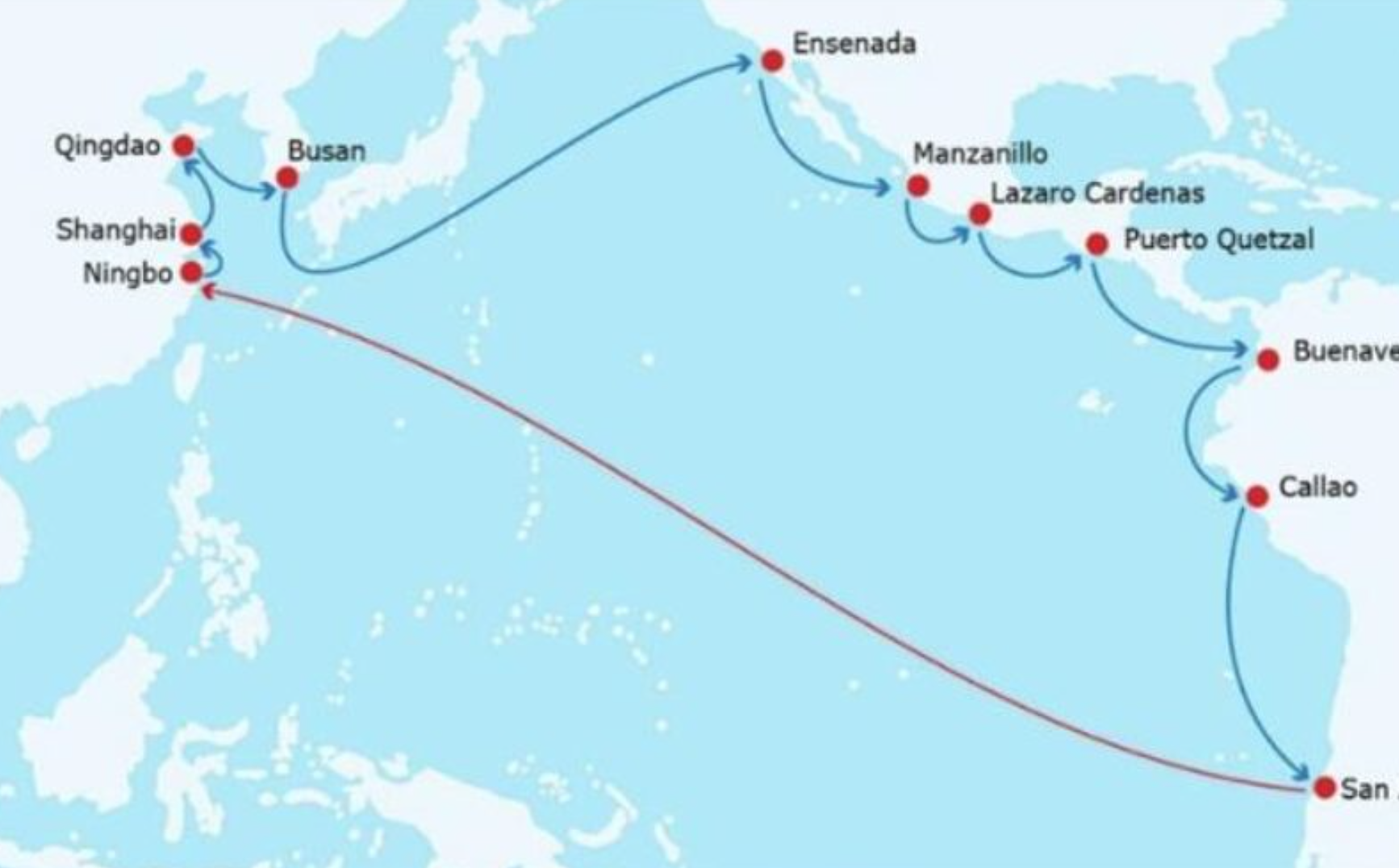PIL strengthens service coverage on West Coast to South America routes
 2025-04-03
2025-04-03
 16
16
Pacific Lines (PIL) has announced an upgrade to its WS6 route to further optimise its service network on the West Coast to South America. After this adjustment, the WS6 route will add a weekly call to Ensenada Port in Direct, Mexico, and the stop in Chile will be changed from Valparaiso Port to San Antonio Port. This series of changes aims to provide customers with a more efficient and convenient shipping service experience. The improved WS6 route will officially sail on April 2, 2025.

The sequence of calling ports on the new WS6 route is as follows:
Ningbo → Shanghai → Qingdao → Busan → Ensenada → Manzanillo → Lazaro Cardenas → Puerto Quiriguar → Buenaventura → Callao → San Antonio → Ningbo
Among them, Ningbo is located in the eastern coastal area of China and is one of the important port cities in Zhejiang Province; As one of the largest Container ports in the world, Shanghai occupies a pivotal position in the International. Qingdao is a major foreign trade window of Shandong Province; South Korea's Busan Port is famous for its efficient logistics system. As for the newly added Ensenada Port, it is located on the west side of Baja California Peninsula in Mexico. It is an important fishery center and tourist destination. In recent years, with the continuous improvement of infrastructure construction, it has gradually become one of the key nodes connecting cargo transportation on both sides of the Pacific Ocean.
William Ho, general manager of long-distance trade line management at PIL, said: "Throughout Latin America, we proudly operate five service routes to serve our customers. Following the principle of'customer-centric ', we are committed to investing in the region, constantly pushing boundaries, improving service levels and creating more value for customers."
Recently, PSA International Group, DNV Singapore and PIL signed a Memorandum of Understanding (MoU), which will see the three parties cooperate on carbon emission measurement, reporting and verification. This move not only reflects the company's sense of responsibility for environmental protection, but also marks a big step towards greener and more sustainable development for the shipping industry.























